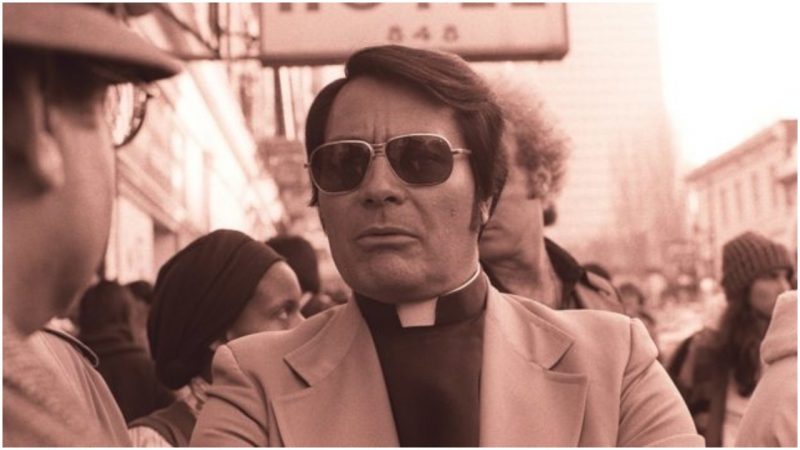
There is nostalgia as never before for the San Francisco of the 1960s and the 1970s. A new generation filled the streets with a message of love and peace, great musicians rocked the scene, youths brought a world of color to Haight-Ashbury with their fashion, drugs were taken freely, and a feeling of hopeful innocence permeated. But during this same time, some were deceived by the power and charisma of others who had less-innocent motives, and lost their lives because of it.
San Francisco was the center of many movements, some of which changed the culture, and some that left a dark mark on American history. It was during the 1960s when one such charismatic character, Jim Jones, founded the People’s Temple in San Francisco, and its members would go on to commit mass suicide with cyanide, an infamous event that became known as the Jonestown massacre.
Jones had previously established the Temple in Indiana, but then strategically moved to the “noisiest” place in the U.S. at that time, one where he knew he would attract many followers. Jones had been a regular church goer since his childhood, and in 1961, after he graduated from Butler University, Indianapolis, he decided to become a minister.
He was very magnetic, worked with the homeless, and was an open-minded churchman who vocally advocated for racial integration. He was married to Marceline Baldwin Jones in 1949. They had one son together and six adoptees of different races. They were the first white couple in Indiana to ever adopt a black child.
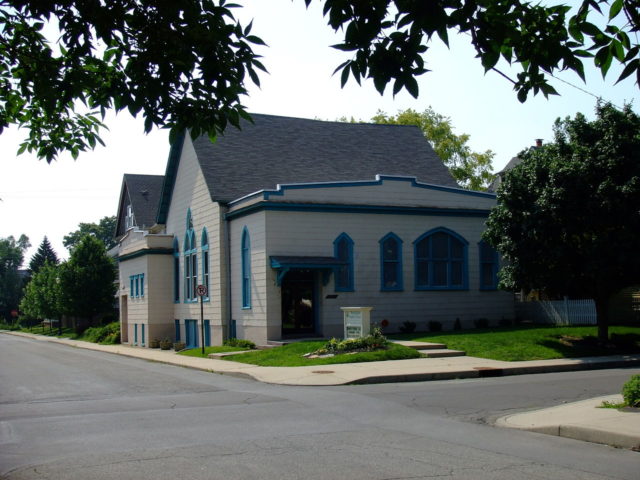
Jones’s first church in Indianapolis. Author: Indytnt CC BY-SA 3.0
In 1955, while still in Indianapolis, Jones founded a Pentecostal church, the Wings of Deliverance, that would later become known as the People’s Temple. In the early 1960s, he served as a director of Indianapolis’s Human Rights Commission. However, he was always a rather paranoid character, and during this time his fear of nuclear war made him relocate his church to California. Jones first settled in Ukiah in 1965 and six years later in San Francisco.
His church turned into a cult temple where members were recruited. And it wasn’t hard. First of all, he was in San Francisco, where many young people were seeking spiritual direction and guidance; second, he was against racism, which attracted many people of color to follow him; and finally, he was genuinely delusional in his “prophecies” and incredibly charismatic, so that he was able to get people to really believe.
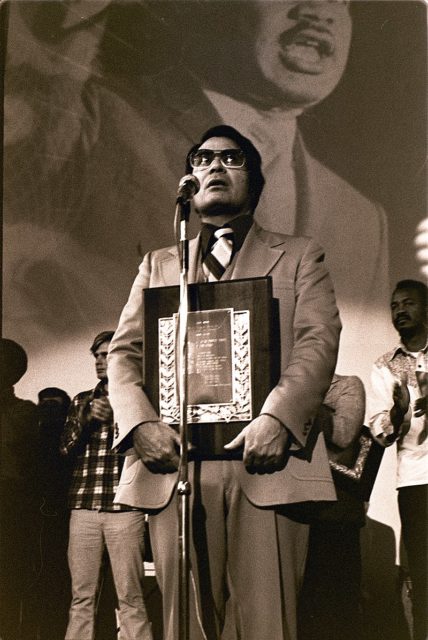
Jim Jones, leader of the Peoples Temple, receives a Martin Luther King, Jr. Humanitarian Award from Glide Memorial Church, San Francisco January 1977. Author: Nancy Wong CC BY-SA 3.0
His evolving fear of nuclear war prompted Jones to move to Belo Horizonte in Brazil with his family, because he read that in a case of such a war, that city would still be a safe place. That was also the first time that he visited Guyana. After struggling for two years, the Joneses returned to California, where “the prophet” continued his teachings. However, Jones soon started diverting from Christianity and the Bible, which he ultimately wanted to destroy. His religious teachings began to be framed in a form of communist propaganda rather than any form of spiritualism.
In the mid-1970s, there were growing accusations that Jones was illegally diverting the income of the cult members for his own purposes. That was one of the main reasons why he, with many of his followers, left the U.S. and moved to Guyana in 1977, where they established Jonestown. It was formally known as an agricultural project, guarded by people with machine guns, while inside it was ruled under communist-type laws, and there were physical punishments for breaking those rules. For example, if a member vocally desired a food that was not available, they could be beaten.

Jim Jones receives a Martin Luther King, Jr. Humanitarian award from Pastor Cecil Williams, 1977. Author: Nancy Wong CC BY-SA 4.0
In an interview, a survivor from the cult, Teri Buford O’Shea, told her story, explaining how she and over 900 other people left for the jungle in Guyana. She had been a 19-year-old homeless woman when she became involved in the People’s Temple, where she remained for seven years. O’Shea revealed that she was always afraid of Jones, from the very first moment she met him, but she still followed him. The main reason, she said, was the other people who were part of the sect. She described them as good and hard-working people.
While in Guyana, O’Shea became one of Jones’ secretaries, most of whom he had a sexual relationship with. She explained how Jones invented the mass suicide rehearsals, which he called White Nights. If he announced, “White Night” on the loudspeakers, which were everywhere, people were supposed to hide in the pavilion because their lives were in danger, or so Jones informed them. He lied to them that there was a genocide going on in the streets of the United States and that officials were coming to the jungle to kill them because he chosen “a communist way” of living. The cult members didn’t know, but Jones had arranged for people to fire shots in the surrounding jungle to provoke fear among his followers.
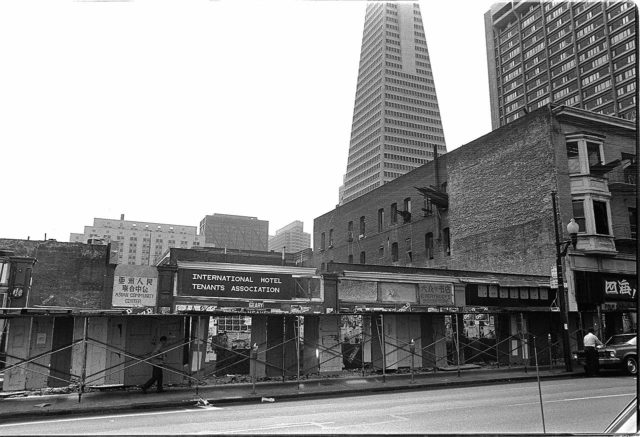
The International Hotel at 848 Kearny Street in San Francisco stood empty for years after the 1977 eviction. Author: Nancy Wong CC BY-SA 3.0
According to O’Shea, his paranoia was growing, and he started reminding her of her mother, who had suffered from schizophrenia. She became aware of the unhealthy conditions she was living in and the dangerous and unpredictable nature of Jones. At the same time, Timothy Stoen, a member who had previously escaped the cult, returned to Guyana and started a legal battle over the custody of his son, who had remained with Jones. Nobody could escape easily, and there were only a few who managed to do so by running into the jungle. However, under no circumstances did Jones permit children to leave Jonestown.
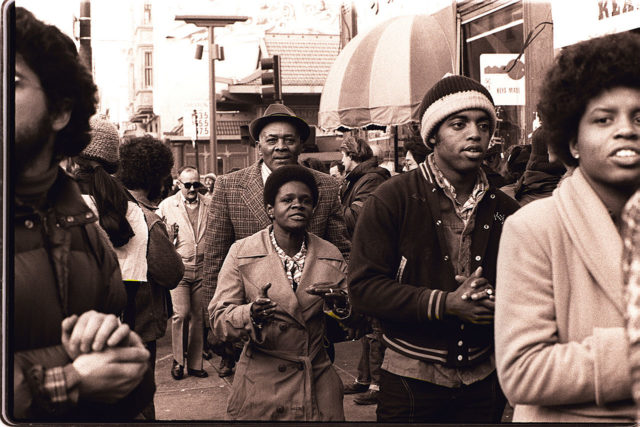
Peoples Temple members attend an anti-eviction rally at the International Hotel, San Francisco, January 1977. Author: Nancy Wong CC BY-SA 4.0
Soon after he escaped, Stoen started raising awareness of what was happening in Jonestown. A congressman of California, Leo Ryan, became curious about the situation, and on the 1st of November, he announced that he was going to visit Jonestown. A few members of Ryan’s staff, several newspaper reporters, an NBC TV team, and 17 relatives of cult members joined Ryan and left Washington, D.C. on the 14th of November. On the 17th, 16 people traveled to Jonestown, where Jones hosted a reception. During their stay, Jones didn’t show any signs of wanting to keep his followers against their will and he even let 15 leave with Ryan after he asked if anybody wanted to go.

Congressman Leo Ryan, who was shot and killed on Jones’ orders as he and others attempted to leave Jonestown in 1978.
But, on the 18th of December, as soon as the delegation started boarding two planes at the airstrip, Jones’ armed guards arrived and started shooting. Only seven members of the delegation managed to survive, as well as most of the members of the cult who wanted to leave with the Congressman. Ryan was shot dead. Fearing that the survivors would bring back authorities to Jonestown, Jones ordered all of his followers to drink punch containing cyanide. First, the kids were killed, all 304 of them. It was almost impossible to avoid drinking the deadly concoction, although a few managed to run into the jungle. After everyone drank their share of poison, guards went around with stethoscopes and if there was anyone with a heartbeat, they shot them.

Houses in Jonestown, Guyana, 1979. Author: Fielding McGehee and Rebecca Moore CC BY-SA 3.0
Almost all members of Jones’ family were among the dead, including the man himself. He died of a gunshot wound to the head, most likely self-inflicted. When the Guyanese troops arrived at Jonestown the next day, they found 909 people dead. The mass suicide in Jonestown was the second largest loss of American civilian life from a deliberate act until the September 11 attacks.
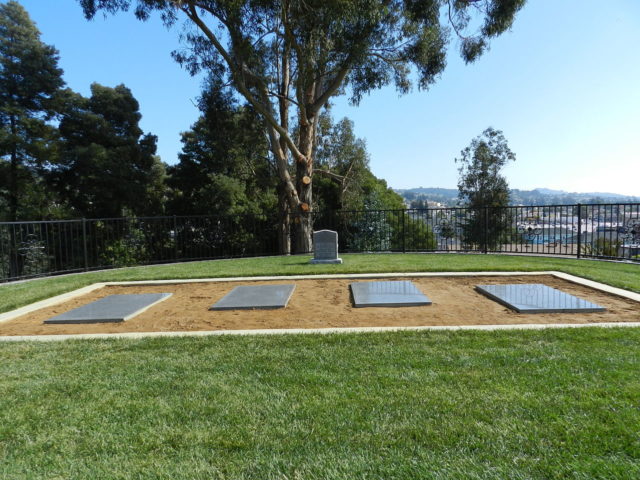
Memorial gravesite, Evergreen Cemetery, Oakland. Author: Mercurywoodrose CC BY-SA 3.0
In her interview, O’Shea explained how she managed to escape only three weeks before the 18th of November. As there were a number of lawsuits against Jim Jones that required his presence in the United States, his lawyer, Mark Lane, flew to Guyana to bring him the news of a conspiracy against Jones. Jim sent his lawyer back to the U.S. to handle the situation, and O’Shea proposed that she should go with Mark and help him, rather than involve another person from the outside. Jones agreed. As soon as the two arrived in San Francisco, O’Shea said that she was going to the dentist. Instead she escaped to New York, where she changed her name until FBI agents tracked her down as a witness.
In her interview, published in The Atlantic, O’Shea said: “Jonestown was an important part of American history, and it’s been marginalized. We have to ask ourselves, why did 918 people leave this country and go with Jim Jones to Guyana? That’s a big question. Why did this group feel they’d rather live in a jungle than in San Francisco, Oakland, Atlanta, wherever they were living?”

